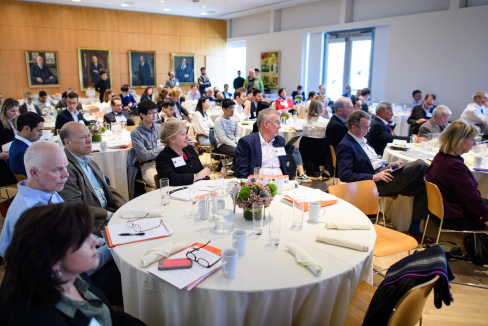Principal Investigator
At a Glance
CMI researchers are developing models which allow them to better assess the potential role of drought-tolerant agriculture for carbon sequestration and food production in semiarid ecosystems. This research investigates Crassulacean acid metabolism (CAM) photosynthesis, a water-conserving pathway used by many epiphytes and dryland plants. By using models that couple plant hydraulics and carbon fluxes to the soil and atmosphere, the researchers are able to assess the viability of productivity, water use, and natural climate solutions for dryland ecosystems around the globe.
Research Highlight
The three different photosynthetic pathways —C3, C4, and CAM —can be likened to gasoline, turbocharged, and hybrid cars. The first pathway is the basic engine and simplest evolutionary form of photosynthesis. The second pathway, C4, concentrates carbon to enable increased “turbocharged” efficiency under high light and temperature conditions: these are the super-efficient workhorse crops like corn, sugarcane, and sorghum. The CAM pathway is the “hybrid” system, which runs on 6-10 times less water by taking advantage of diurnal variability of evaporative demand.
Researchers at CMI have introduced the Photo3 model (Figure 7.1), which represents all three photosynthetic pathways (C3, C4, and CAM) in a consistent, physiologically-based manner (Hartzell, Bartlett, and Porporato 2018). The model unites a common photosynthetic and hydraulic core with components depicting the circadian rhythm of CAM photosynthesis and the carbon-concentrating mechanism of C4 photosynthesis. This facilitates a better understanding of the tradeoffs between the three pathways and implications for climate feedbacks.

The Photo3 model represents the fluxes of carbon (as arrows) involved in basic C3 carbon fixation, the C4 “turbocharged” carbon concentration mechanism, and the CAM “hybrid” circadian rhythm. Consistent representations of the primary carbon fluxes (pink), respiration (grey), and photosynthetic Calvin cycle (yellow) enable uniform predictions of carbon fixation and water use (after Hartzell, Bartlett, and Porporato (2018).
Extensions of this work over the last year have enabled the researchers to predict biomass productivity and water use from basic principles for CAM plants (Hartzell et al., 2020), improving on previous models which were not generalizable outside of specific geographic regions. This is paving the way for predictions and assessment of the suitability of CAM crops such as prickly pear (Opuntia ficus-indica) and agave (Agave tequilana) for food and biofuel production on a global scale (Figure 7.2).

Left: Model results accurately simulated carbon sequestration and water use by prickly pear (Opuntia ficus-indica), improving upon the empirically-based environmental productivity index (EPI) (after Hartzell et al. (2020)). Right: Photo of prickly pear cacti at the Estação Experimental de Arcovderde IPA in Permambuco, Brazil (Hartzell, 2019).
Using a similar modeling framework combined with a probabilistic description of soil moisture, researchers are now investigating the potential of various drought-tolerant solutions for long-term carbon sequestration in dryland agroecosystems. This work predicts that the implementation of drought-tolerant agroecosystems may lead to significant increases in global natural climate solutions for carbon sequestration. It will also provide social and ecological co-benefits such as decreased erosion, increased soil quality, and increased financial stability in the face of a warming and drying climate.
References
Hartzell, S. et al., 2020. Modelling Nonlinear Dynamics of Crassulacean Acid Metabolism Productivity and Water Use for Global Predictions. Plant Cell and Environment (April): 1–15. (https://doi.org/10.1111/pce.13918).
Hartzell, S., M.S. Bartlett, and A. Porporato, 2018. Unified Representation of the C3, C4, and CAM Photosynthetic Pathways with the Photo3 Model. Ecological Modelling 384: 173–87. (DOI: 10.1016/j.ecolmodel.2018.06.012).




